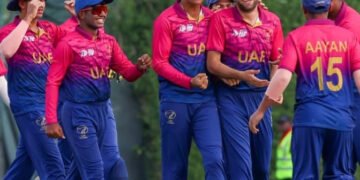Saudi Arabia Is Investing Billions in Sports — But Is Real Development Happening?
Saudi Arabia’s Public Investment Fund (PIF)-owned club, Al-Ahli, made history by clinching the AFC Champions League title for the first time, a crowning achievement that spurred huge celebration across Saudi social media.
Al-Ahli’s 2-0 triumph over Japan’s Kawasaki Frontale at the vibrant Al-Inma (King Abdullah Sports City) Stadium in Jeddah marks a watershed moment for Saudi football. With this victory, Al-Ahli becomes the third Saudi team to win the AFC Champions League, following Al-Hilal (champions in 1992, 2000, 2019, and 2021) and Al-Ittihad (winners in 2004 and 2005).
Significantly, Al-Ahli is among the clubs targeted by the country’s sweeping Saudi Sports Investment Project. Since June 2023, the PIF has held a 75% stake in four of the most prominent Saudi football clubs: Al-Ahli, Al-Hilal, Al-Nasr, and Al-Ittihad.
This continental title marks a key milestone for the Saudi sports project as it nears its two-year anniversary, underlining substantial progress from a sporting, financial, and marketing perspective — even as the performance of the national team remains under scrutiny. This article aims to offer a deeper re-evaluation of Saudi Arabia’s sports transformation, focusing mainly on the game of football.
How Did the Saudi Sports Project Begin?
The ambitious reforms trace their roots to the announcement of the Sports Clubs Investment and Privatization Project on June 5, 2023, by Crown Prince Mohammed bin Salman. It was unveiled as a vital part of Saudi Vision 2030 — the Kingdom’s nation-wide transformation plan. The initiative introduced a new model for sports governance with two major pathways:
- Allowing major corporations and development entities to invest in sports clubs, resulting in ownership conversion.
- Privatizing eight football clubs, including four allocated to the PIF (Al-Hilal, Al-Ittihad, Al-Nasr, Al-Ahli), and four going to state-backed organizations like Saudi Aramco (Al-Qadisiyah), NEOM (Al-Suqoor), Diriyah Gate Development Authority (Al-Diriyah), and the Royal Commission for Al-Ula (Al-Ula Club).
An investment fund was also established for each of these club-turned-companies, aimed at increasing investment returns and strengthening their overall growth potential.
Key Strategic Objectives of the project include:
- Creating high-quality investment opportunities and making the Saudi sports sector more attractive globally.
- Enhancing professionalism and governance in sports club administration, with government support reaching 1.4 billion SAR as of late 2022 (excluding Al-Ahli).
- Developing world-class infrastructure to enhance fan experience across the Kingdom.
Ultimately, the project’s aim is to privatize the clubs in a way that not only cultivates national talent and raises football standards but also to propel the Saudi Professional League into the world’s top 10. Financially, the goal is to increase league revenue from 450 million SAR to 1.8 billion SAR annually, while boosting its market value from 3 billion to 8 billion SAR.
According to the author, however, the primary goal may not be to win more championships but instead to elevate Saudi Arabia as a sports entertainment hub.
Investment Outcomes from the Sports Project
According to the Ministry of Investment, the total market value of the Saudi sports sector increased to 32 billion SAR ($8 billion) in 2023, up from 5 billion SAR in 2018. The goal is to reach 80 billion SAR ($21 billion) by 2030.
Additionally, sporting tourism has boomed, with 14 million tourists attending matches and events last year. Globally, the sports market is also growing, expanding from $477.8 billion in 2024 to an expected $507.69 billion in 2025.
Most notably, Saudi Arabia secured the hosting rights for the 2034 FIFA World Cup — a monumental achievement reflecting the Kingdom’s enhanced infrastructure and growing influence in global sports.
Marketing and Promotional Impact
The Saudi Professional League was ranked as Asia’s #1 league in 2024 by the Asian Football Confederation (AFC).
Broadcast viewership of Saudi matches surged past 200 million worldwide, across 160 countries, averaging three games per week. Furthermore, the league secured its international credentials as 14 players represented their countries in the European Championship, and 10 top-100 world players were recruited directly into the league.
Star Power & Competitive Edge
The Saudi project succeeded in luring world-renowned stars like Cristiano Ronaldo, Karim Benzema, Neymar, Roberto Firmino, among others. Additionally, young and promising talent such as Ivan Toney, Houssem Aouar, and Ruben Neves joined the league, pushing back against the narrative that Saudi football is merely a retirement destination for older players.
Al-Ahli’s AFC Champions League victory and a thrilling King’s Cup final between Al-Hilal and Al-Nasr in May 2024, attest to the soaring level of local competition and the league’s broader appeal.
The Saudi National Team: Falling Short
Despite the club-level success, the national team’s performance has lagged behind. Since the launch of the Saudi sports investment project:
- At the 2023 AFC Asian Cup, Saudi Arabia exited in the Round of 16 against South Korea.
- They finished third in the World Cup qualifiers, behind Australia and Japan.
- At the 2024 Gulf Cup, Saudi Arabia was knocked out by Oman, despite the latter playing with a numerical disadvantage.
These outcomes suggest that while the overall football ecosystem has improved, it has not yet translated into better results for the national squad.
Reevaluating the Project
From a club perspective, the Saudi sports initiative has significantly elevated the standard of local competitions, enhanced visibility, and attracted major investment. The competition level has surged, helped along by high-caliber foreign players, thus positioning the Saudi League as Asia’s most powerful today.
Nonetheless, this very reliance on foreign players appears to have come at the cost of national team development, raising concerns over local talent integration and long-term sustainability.
Conclusion
While it is still early to measure the full economic impact of the project, the Saudi sports transformation has clearly increased tourism, foreign investment, and entertainment value. However, these gains have not yet led to the desired improvement in national team performance.
Is Saudi Arabia building a world-class entertainment empire — or a sustainably competitive national football culture? That remains an open question.
Signed,
V.2 Editorial Team
































